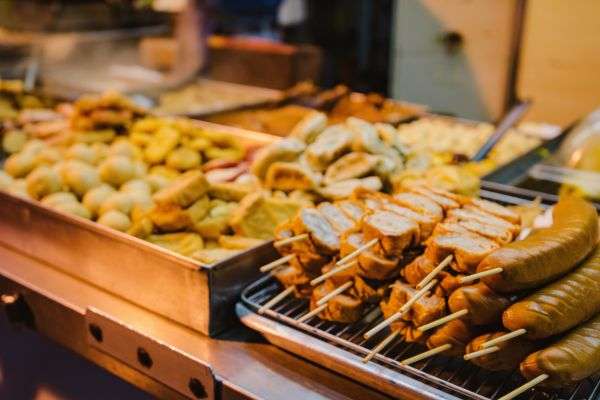Nicknamed “Pearl of the Orient,” Hong Kong is a place that simply has it all – skyscrapers like the IFC and ICC that dramatize the skyline, pristine outdoor landscapes like Cape D’Aguilar and Dragon’s Back that enlighten your senses, and mouthwatering Hong Kong cuisine that will expand your palette.
However, nestled in this mega-metropolitan city of the east is a unique experience that many visitors might miss – enjoying some of the best street food in Hong Kong. In our guide, you will discover the 8 most popular street foods in Hong Kong that you must try and where to find them!
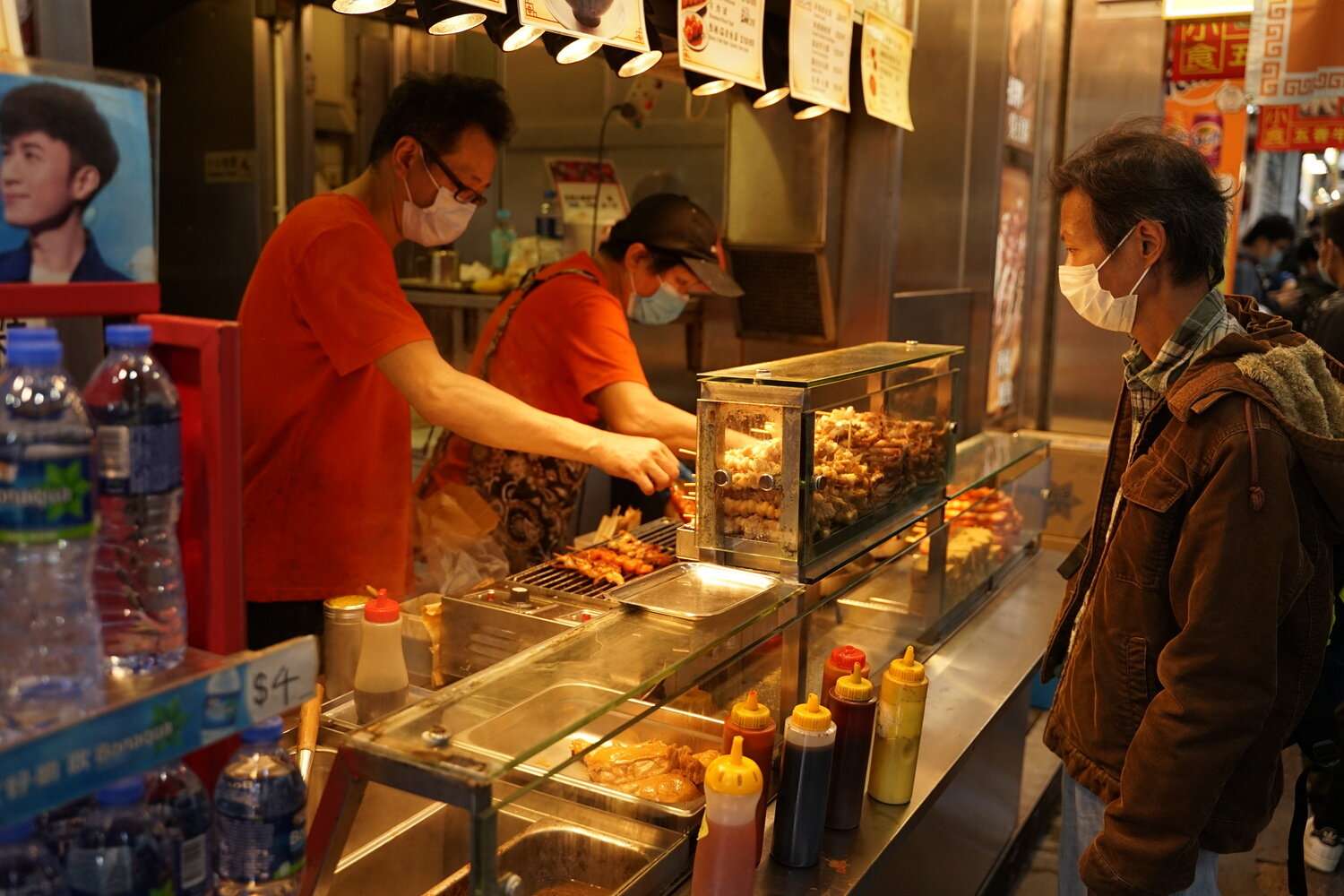
Page Contents
ToggleBest Street Food in Hong Kong List
1. Fish Balls—King of Street Food in Hong Kong
No list of street food in Hong Kong would complete without fish balls, arguably the king of Hong Kong street food.
Yellow in color, these ping pong-sized fish balls are usually sold in 5’s or 10’s on a bamboo skewer. Typically, the fish balls are made with fish paste and boiled in a brothy soup or a spicy curry-satay sauce.
When you purchase them from the street stalls, you can choose between the spicy or the non-spicy option. The taste of non-spicy option usually doesn’t vary from vendor to vendor. What separates the average fish balls from the elite is their tenderness along with the perfect flavor profile from the spicy sauce (if you decide to go with the spicy option).
Generally, the shopping area of Mong Kok is a great place for street food in Hong Kong, including fish balls. There you will find multiple vendors selling this popular Hong Kong snack. If you want the extra-large fish balls, you must make a trip to Tai O Fishing Village on Lantau Island!
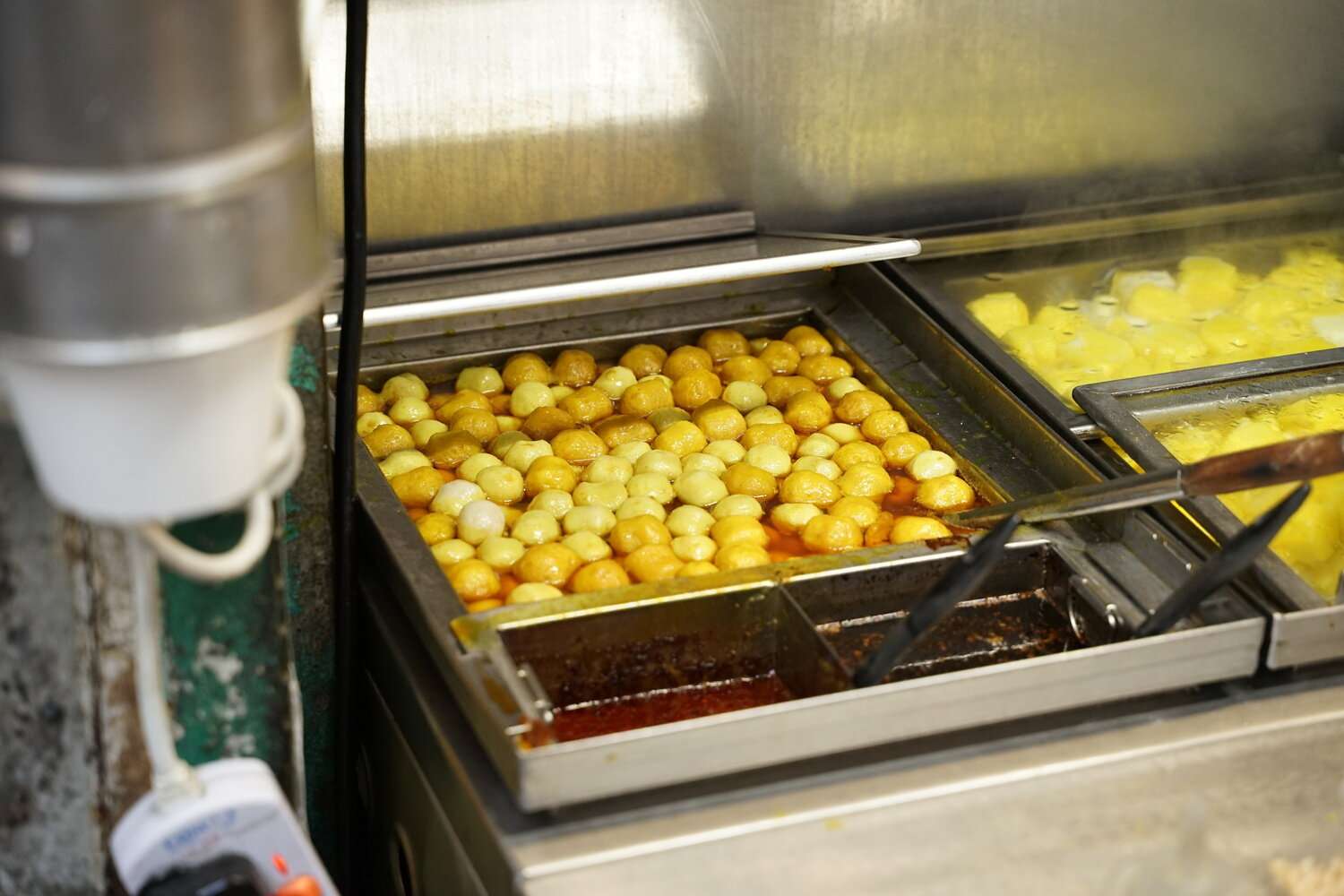
2. Egg Waffles—Specialty Hong Kong Street Food
Unlike fish balls that are common to many parts of Asia, Egg waffles (or “gai daan jai” in Cantonese) are something that you will only find in Hong Kong or Macau. Similar to the western-style variation, egg waffles are cooked between two hot plates. The difference between the two comes from the fact that egg waffles use an eggy leavened batter, and the two plates have semi-spherical cells instead of rectangular cells. The result? A slightly sweet snack that is perfect for any occasion.
As a popular Hong Kong street food, egg waffles can be easily found at many street food vendors. Similar to the fish balls, most of these vendors are concentrated in the neighborhood of Mong Kok in Kowloon. Though you don’t necessarily have to venture out there for egg waffles (because they are everywhere), Mong Kok has a the best selection.
Because of their popularity, egg waffle specialty stores have begun spawning in Hong Kong. If you want to try chocolate-filled, matcha-filled, or any of the likes, then head over to Mammy Pancake. They are a chain in Hong Kong and you won’t want to miss them!
If you find you have over-indulged, you can always take a hike at Tai Chui Hang Waterfall, one of Hong Kong’s hidden gems.
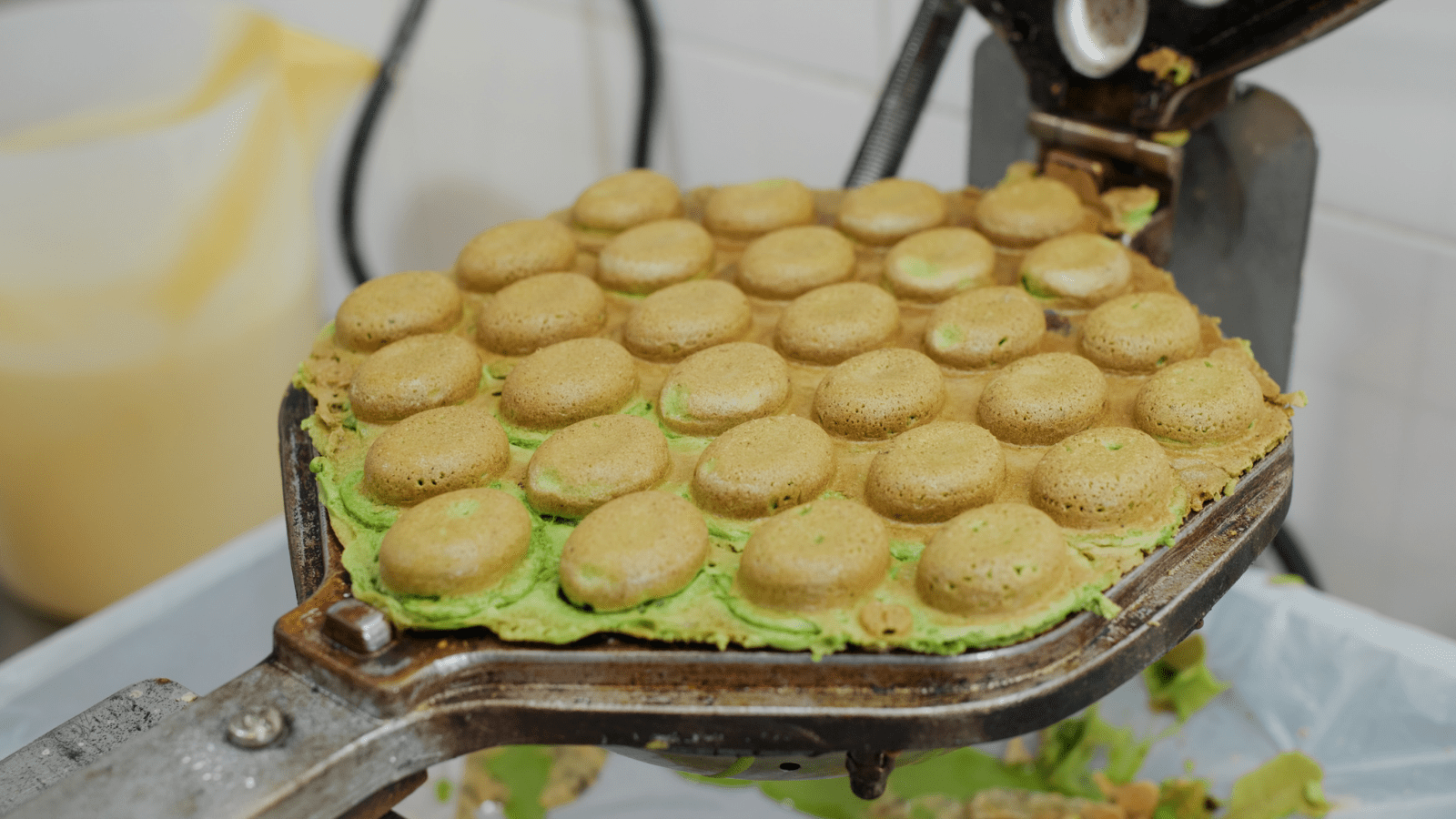
3. Fried Pig Intestines—Traditional Hong Kong Food
In the sea of “normal” street foods in Hong Kong hides fried pig intestines, one of the strangest Hong Kong street foods to Westerners. Though the consumption of pig organs might be repulsive to some, fried pig intestines are beloved by locals and are a traditional Hong Kong food.
After they have been fried to perfection and cooked in a delicious marinade, the pig intestines are served on a skewer. Once served, consumers can add additional sauces to their liking. Some of the most popular sauces you will find are hoisin sauce and chili sauce.
If you were like us, then you might think that there is a certain appeal to it because everyone seems to love it. There really isn’t (at least to us). Fried pig intestine is rather crunchy on the outside but the inside is incredibly chewy and tastes/smells like manure. If you want to have a crazy night in Hong Kong, maybe consider going for a fried pig intestine as a late-night snack!
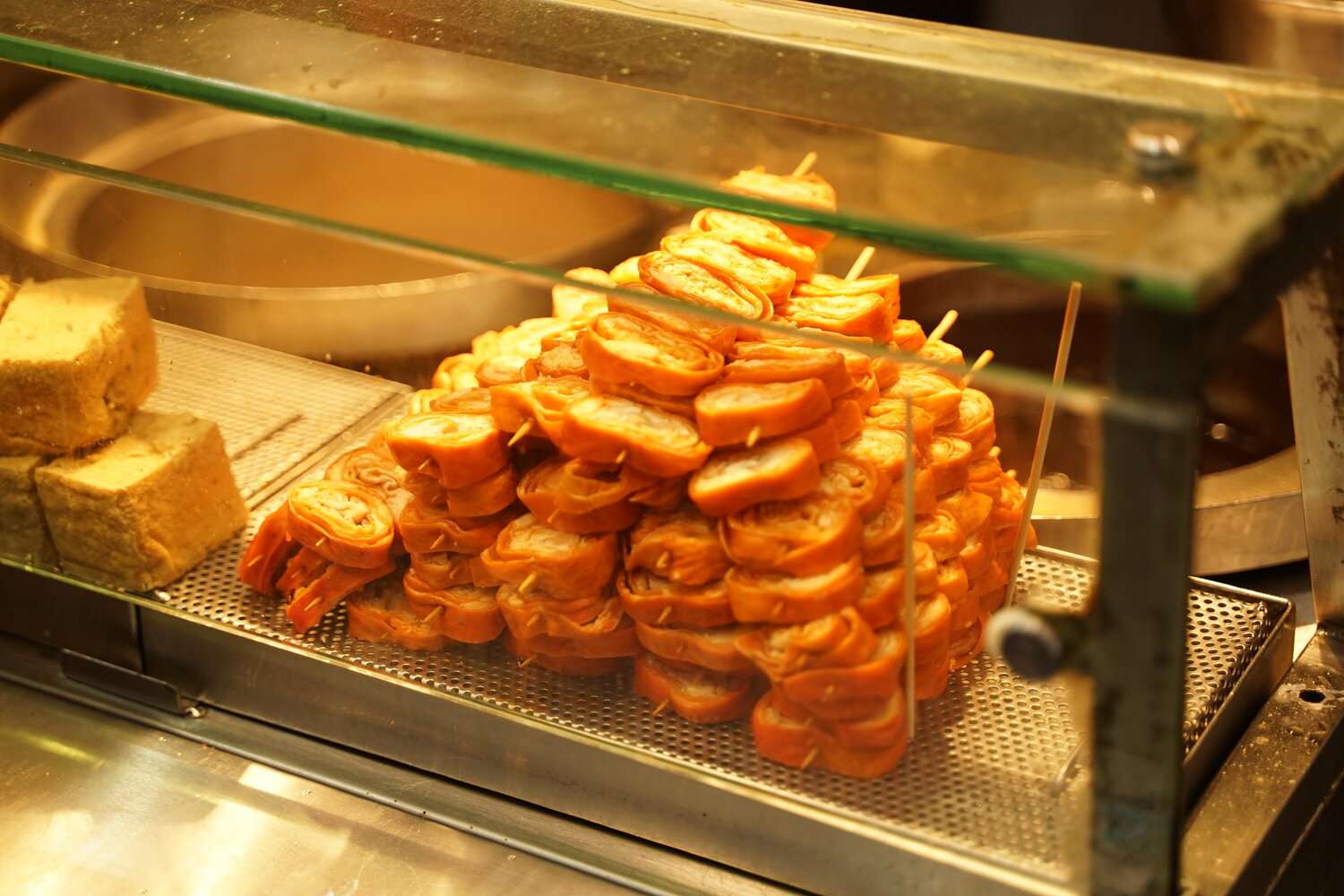
4. Siu Mai—Popular Hong Kong Street Food
Siu Mai is a traditional Chinese dumpling that is often served as a dim sum. However, depending on the way they are made, siu mai can also be street food in Hong Kong. In dim sum restaurants, pork and shrimp are usually used as the filling for siu mai. However, in the street food variation, it is usually made with a mixture of lard, flour, and fish. Though a little bit unhealthy, the ingredients keep the siu mai cheap and tasty!
Nowadays, it is rare to find any street food vendors making their own siu mai. Typically, they purchase them in bulk and prepare them by steaming them. These fish siu mai are usually served as they are but many consumers add a soy sauce mixture to give them a little more flavor!
Similar to the fish balls, siu mai are typically served on a bamboo skewer for ease of eating on the go. As popular as fish balls, siu mai can be found in many parts of Hong Kong, especially Mong Kok.
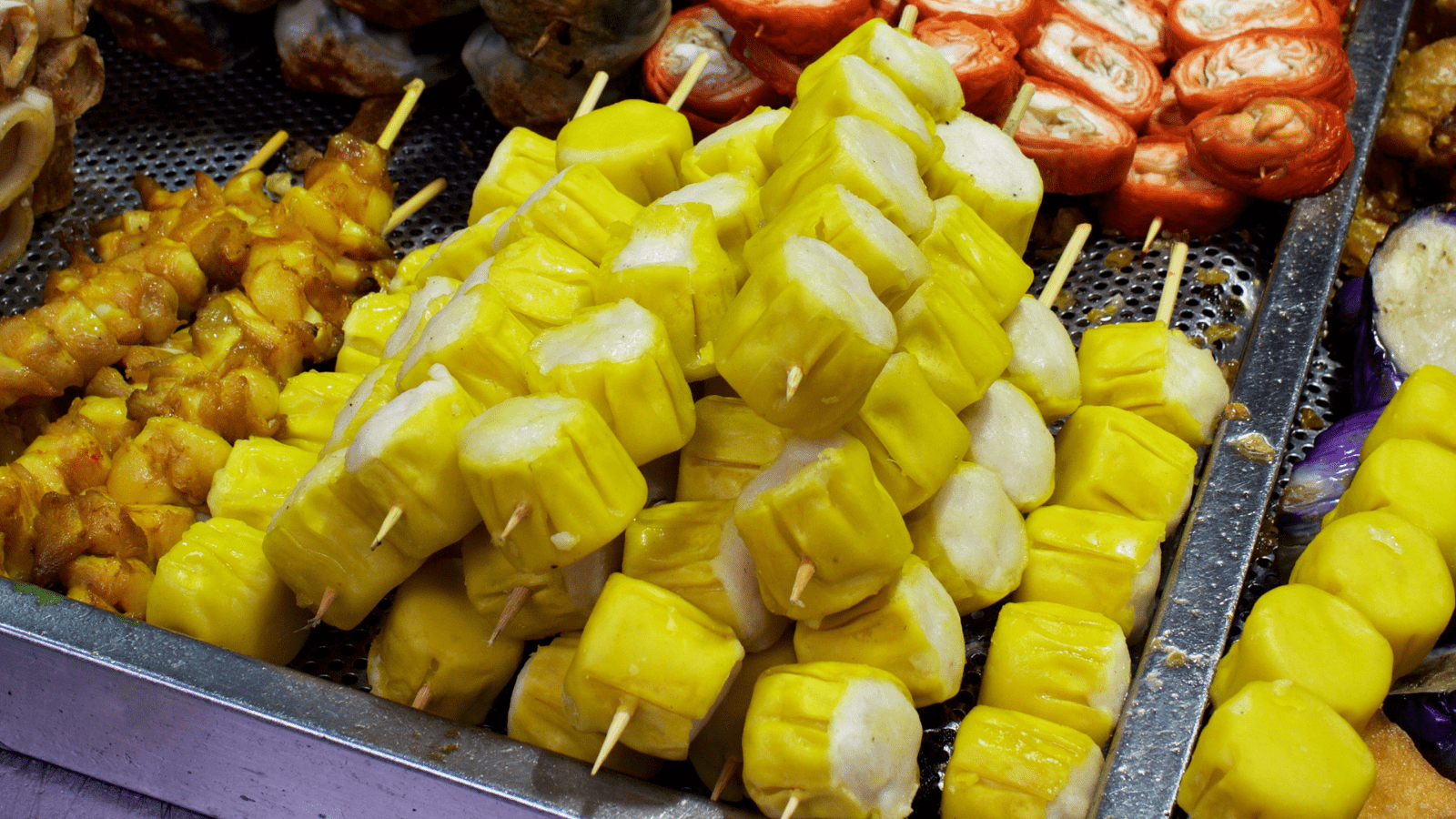
5. Squid Tentacle Skewers—Tasty Hong Kong Street Snack
In western parts of the world, squid is usually found in the form of calamari or squid ink pasta. In Hong Kong, you are more likely to find them on a bamboo stick from a street food stall in Mong Kok. Typically, only the tentacles of the squid are served, so they aren’t exactly the most visually-appealing of the Hong Kong street foods. The squid is usually grilled and cooked, and depending on the method of preparation, seasoning such as salt and pepper, honey, teriyaki, or chili is used.
The result is a tasty Hong Kong street snack that is not only bouncy and chewy (both somewhat desirable traits when it comes to squid), but also a treat that packs an explosion of flavors. It is no surprise you can find them in street food stalls and many of the Chinese restaurants in Hong Kong.
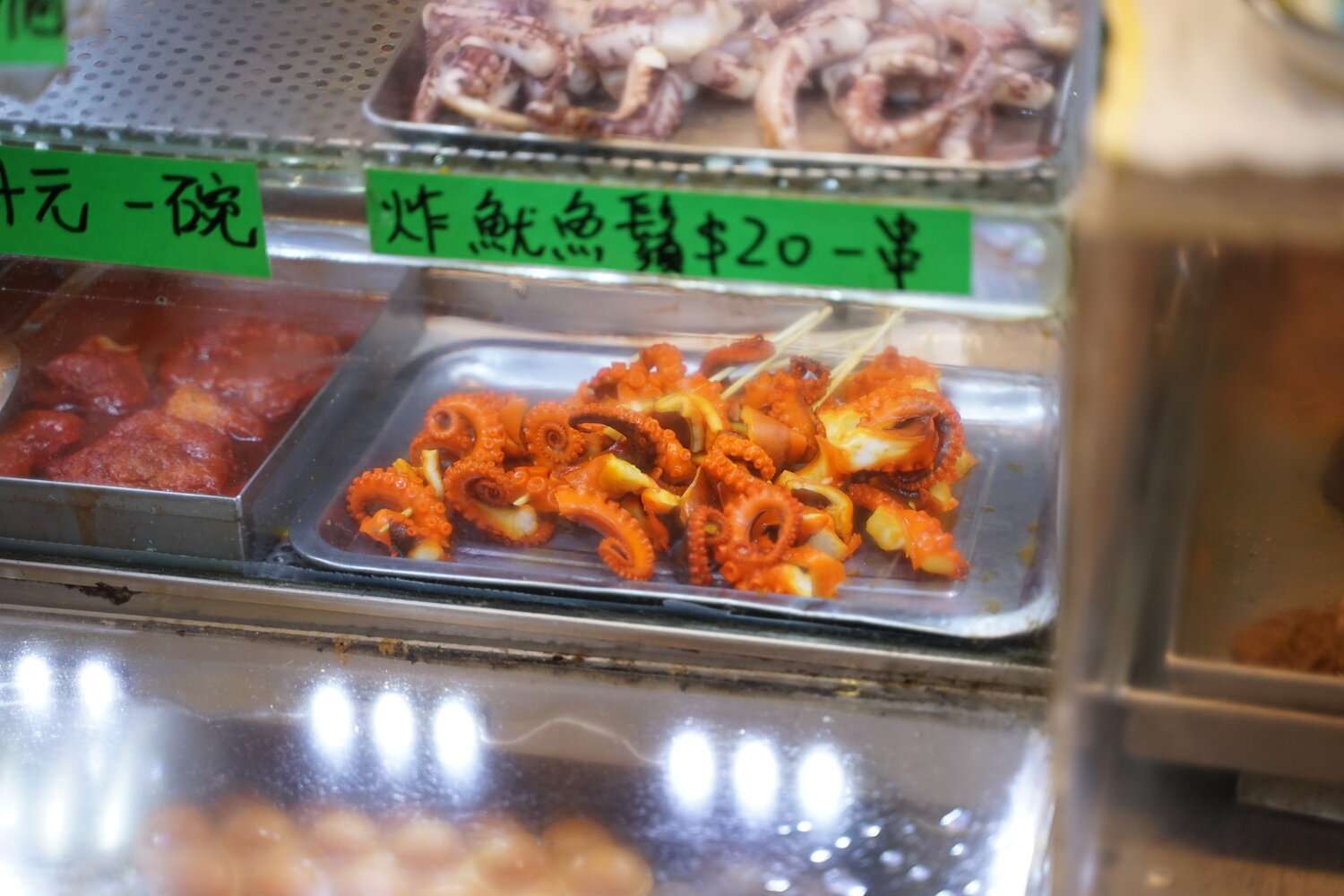
6. Tea Egg—Unique Food of Hong Kong
Tea egg is a simple but unique street snack mostly found only in China and Hong Kong. It is made by taking hard-boiled eggs, cracking them slightly, and then boiling them again in tea, spices, soy sauce, and more. Once reboiled, it is recommended to let the eggs steep for at least several hours in the sauce. This allows the flavor to fully seep deep inside the egg.
The slight cracking in the eggshells create a marble-like texture when the eggs get reboiled, and they are sometimes referred to as marbled eggs.
The unique method in making tea eggs results in a savory snack that is not only delicious and fragrant, but also fairly nutritious. Historically, this method was first used in the Zhejiang province in China as a way to preserve their food. Nowadays, it has become a common snack in every part of China.
Because of the teas and spices used to make tea eggs, travelers won’t typically find tea eggs in your traditional street food vendors. Instead, you will have more luck looking for them from herbal tea shops that dot the streets of Hong Kong.
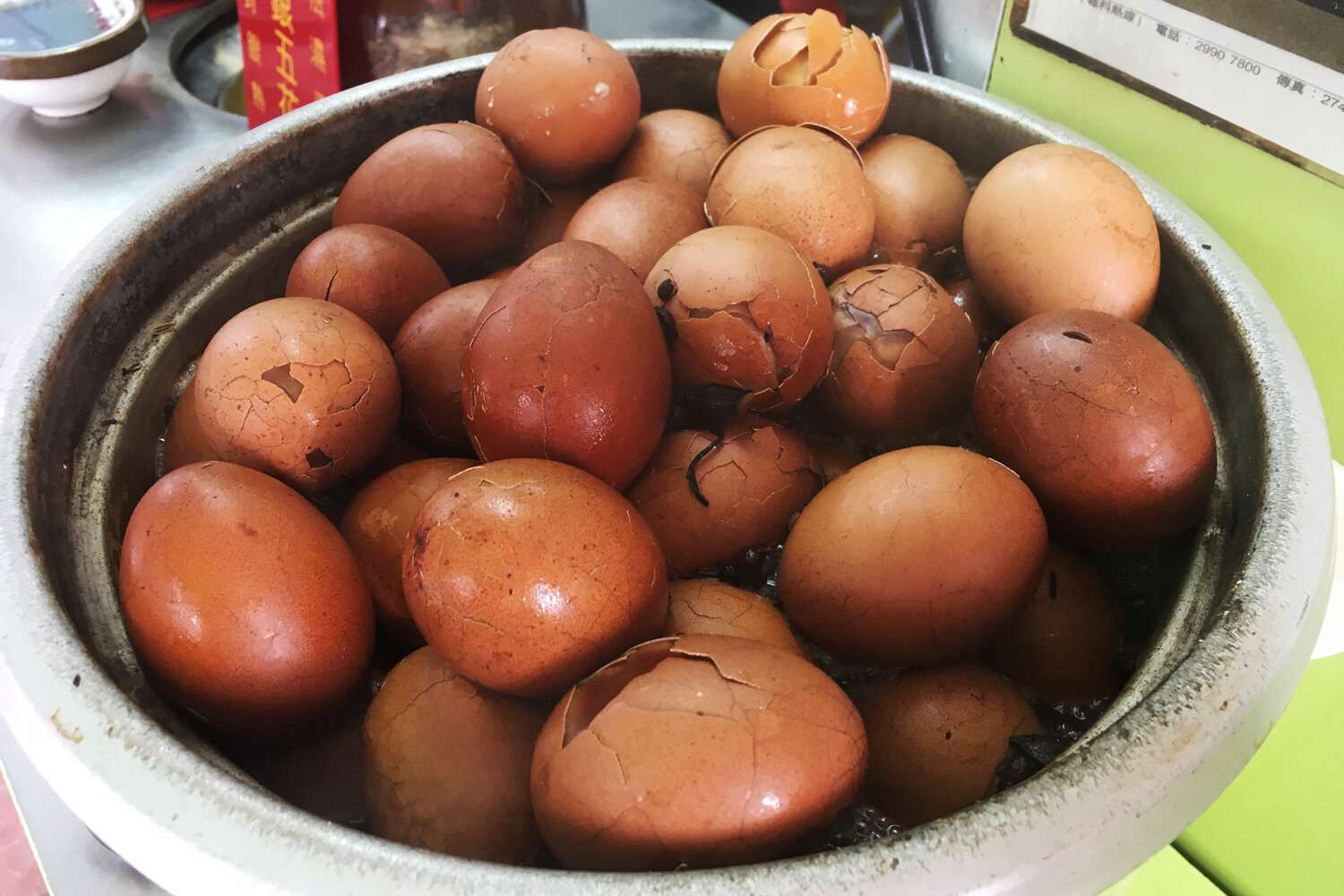
7. Bubble Tea—Most Popular Hong Kong Drink
Though it originates from Taiwan in the early 1980s, bubble Tea is unquestionably the most popular Hong Kong drink of the streets. Walk down the busy streets and you will find at least a few people holding a Hong Kong bubble tea in their hands.
But what exactly is bubble tea? Like the name suggests, it is a drink that involves tea and these glutinous balls that they call bubbles or tapioca balls.
Though the name suggests a drink with only tapioca balls, other toppings such a grass jelly, pudding, and aloe vera can be selected as well. With the wide variety of topping and tea flavors, there are numerous combinations of bubble tea you can have. Luckily for you, there are plenty of chances for you to try all the flavors as bubble tea shops are all over Hong Kong!
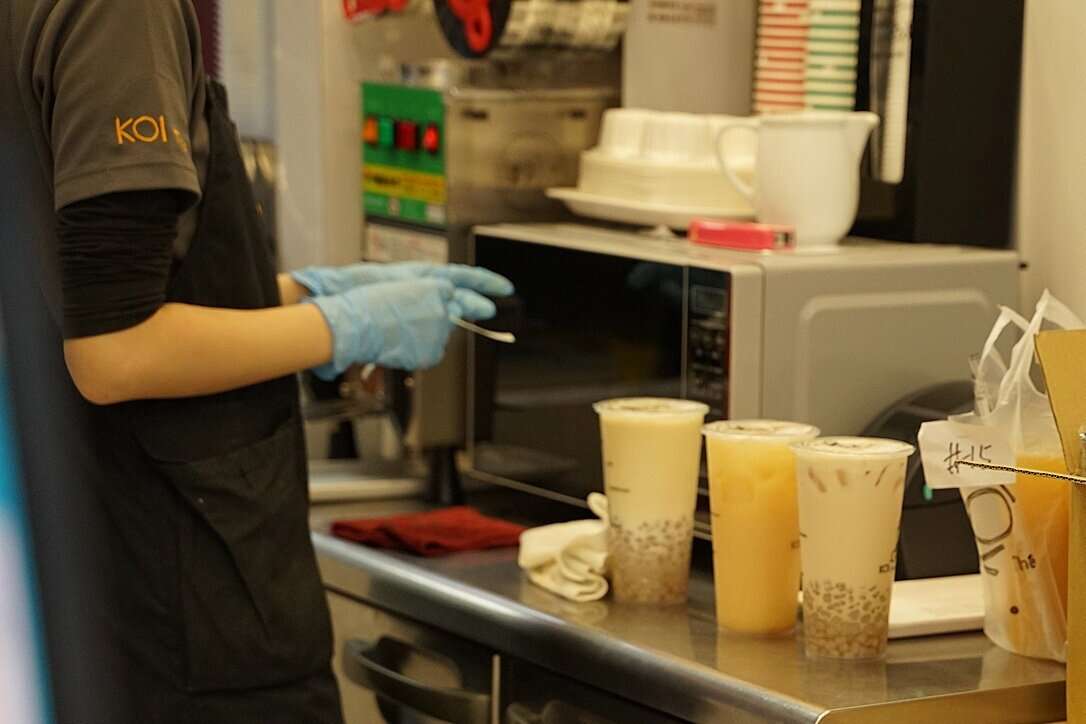
8. Stinky Tofu
Though not originally from Hong Kong, stinky tofu has become one of the most iconic street food in Hong Kong. For those unfamiliar with this infamous Chinese street food, stinky tofu is a type of fermented tofu with a strong and pungent odor.
The traditional method for making stinky tofu involves marinating tofu in a brine made from fermented milk, vegetables, and meat. Some brine also included dried shrimp, bamboo shoots, mustard green, and Chinese herbs. This fermentation process can take up to several months to fully allow the flavors to soak into the tofu.
Nowadays, it is rare to find stinky tofu that was fermented for months. It is more common to find stinky tofu that only has been marinated in the brine, hence only giving off the pungent odor and not the rich taste.
According to legends, stinky tofu was invented by a tofu merchant in the Qing dynasty. One day, the merchant had lots of leftover tofu and decided to cut them up into small pieces and store them in an earthen jar. After several days, he opened the jar and discovered a foul smell. Surprisingly, these foul cubes, though smelly, were quite delicious. Eventually, the tofu merchant started selling those “stinky” tofu in his shop and they became a rave.
Though loved by locals (usually the older generations), there aren’t many stinky tofu vendors in Hong Kong. The process to produce great stinky tofu simply takes too long. Visitors will find some stinky tofu vendors sparsely dotting the busy streets of Mong Kok.
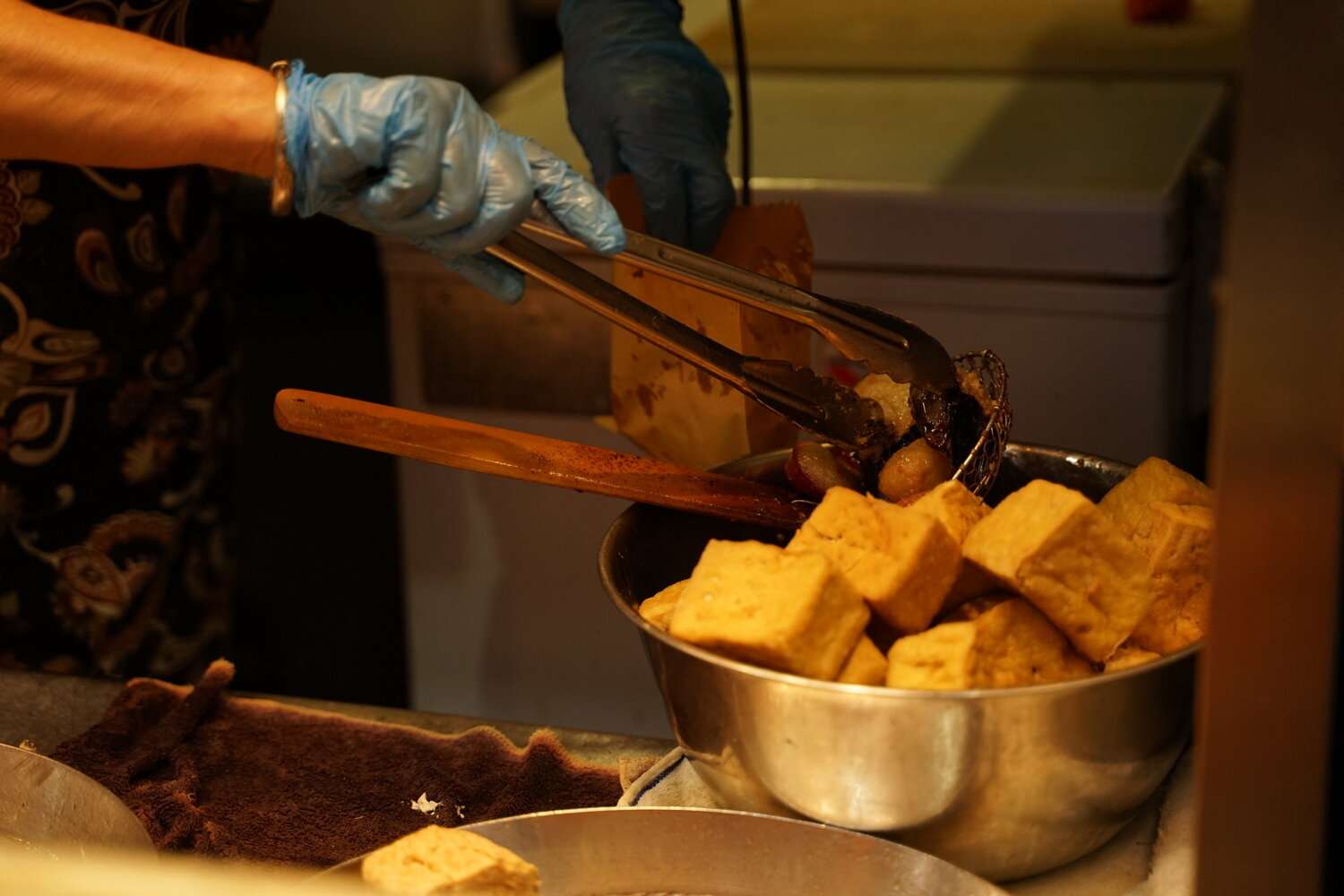
Final thoughts on Hong Kong Street Food
We hope you are able to try as many of these Hong Kong dishes as possible! The good news is that you can afford to stuff yourself on street food in Hong Kong!
And after you’ve tried the best Hong Kong street foods, if you want a culinary experience completely different from Hong Kong street food stalls, head to the Jumbo Kingdom floating restaurant in Aberdeen Harbor.
We’d love to hear from you in the comments! Have you visited Hong Kong or do you plan to visit? What was your favorite food in Hong Kong? What Hong Kong foods are you looking forward to trying?

